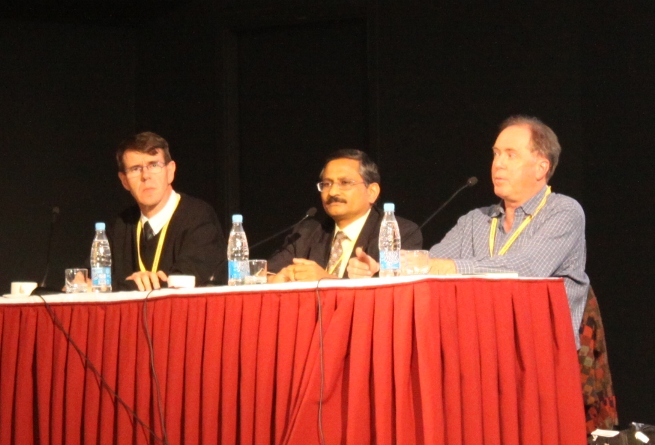Though not a magic bullet “cure all,” agricultural biotechnologies can and should be used in developing countries to improve smallholder farmers’ livelihoods, but farmers themselves need to be involved in decision making, according to participants at an international technical conference on agricultural biotechnologies last week.
During 01-04 March 2010, roughly 300 people from nearly 70 countries attended the International Technical Conference on Agricultural Biotechnologies in Developing Countries (ABDC-10), organized by the Food and Agriculture Organization (FAO) of the United Nations and held in Guadalajara, Mexico. Attendees included representatives from international organizations, civil society, national governments, and national agricultural research programs. Their goal in gathering was to assess the progress of biotechnologies across various agricultural sectors—crops, forestry, livestock, fisheries, and agro-industries—and to generate a forward-looking consensus on ways that biotechnologies can assist smallholder famers in developing countries.
Investment in and improvement of agriculture is vital for the more than one billion people who go to bed hungry each night, as well as for many farming families who survive on only a few dollars a day. Adoption of effective and cost-efficient agricultural biotechnologies is one way to address the food demands of a rapidly expanding and more affluent world population, while also confronting the challenges of increasing land degradation and climate variability.
“Two billion people live on small farms, about one-third of our population,” said Rodney Cooke, of the International Fund for Agricultural Development (IFAD), while addressing the general session. “Investment in agriculture is two-anda- half-to-three times more effective in increasing the income of the poor than non-agricultural investments.”
The FAO predicts that by 2050 there will be a 70% increase in food demand, requiring at least 170 million more acres of cropland. Meeting this demand looks difficult, because crop yields have slowed from an annual increase of 3-6% to only 1-2%, in the last decade.
Agricultural biotechnologies can sustainably improve food security and help smallholder farmers escape poverty. However, many of these advanced technologies are underutilized in developing countries, where a large portion of smallholder farmers live. Overcoming this will require increased investments, international cooperation, effective national policies and regulatory frameworks, and collaboration with farmers and the various value-chain actors, said ABDC-10 participants. Several farmers and farmer representatives in attendance repeatedly stressed the importance of bottom-up development in applying biotechnology.
During the conference, participants divided their time between plenary sessions in the morning and small group meetings in the afternoon. Topics included region and sector-specific issues, as well as multidisciplinary topics such as empowering public participation in decision making; prioritizing the role of the farmer; and development of genomic resources. All participants discussed successes and failures in biotechnology projects in developing countries. The CGIAR was responsible for leading several group sessions; participating CG members included the International Crops Research Institute for the Semi-Arid Tropics (ICRISAT), the International Center for Agricultural Research in the Dry Areas (ICARDA), CIMMYT, and the Generation Challenge Program (CGP).
CIMMYT director general Tom Lumpkin addressed the plenary session in a presentation on the use of biotechnology in the CGIAR. Tom Payne, head of CIMMYT’s wheat germplasm bank, was a panel member for a group session on the conservation and sustainable use of genetic resources. Jean-Marcel Ribaut, Carmen de Vicente, and Rajeev Varshney (ICRISAT) of the GCP also presented on accessing genetic resources, genomic applications, and molecular breeding in developing countries, respectively.
“To meet the challenges of increased food demand in a sustainable way, biotechnologies are essential for the future,” Lumpkin said, stressing as well that such technologies need to show tangible results and the efficient use of time and money.
Payne explained that the CGIAR has 11 gene banks conserving over 530,000 samples of wild and domesticated crops in public trust, but that these genetic resources are not always accessible or useful to breeders. “There are so many accessions but so little information,” he said, adding that the CGIAR is collaborating on a new portal to improve access to the genetic resources (www.global-alis.org).
Additionally, CIMMYT was represented at the ABDC-10’s knowledge share fair, providing publications and information on the center’s biotechnology work. Highlighted projects included rust resistance wheat, nitrogen use efficient maize for African soils, water-efficient maize for Africa, and the conservation and use of maize and wheat genetic resources.
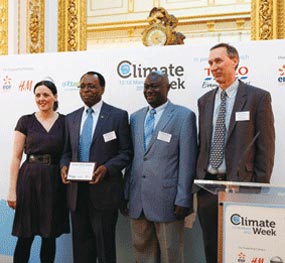 DTMA has been responsible for the development and dissemination of 34 new drought-tolerant maize varieties to farmers in 13 project countries—Angola, Benin, Ethiopia, Ghana, Kenya, Malawi, Mali, Mozambique, Nigeria, Tanzania, Uganda, Zambia, and Zimbabwe—between 2007 and 2011. An estimated two million smallholder farmers are already using the drought-tolerant maize varieties and have obtained higher yields, improved food security, and increased incomes.
DTMA has been responsible for the development and dissemination of 34 new drought-tolerant maize varieties to farmers in 13 project countries—Angola, Benin, Ethiopia, Ghana, Kenya, Malawi, Mali, Mozambique, Nigeria, Tanzania, Uganda, Zambia, and Zimbabwe—between 2007 and 2011. An estimated two million smallholder farmers are already using the drought-tolerant maize varieties and have obtained higher yields, improved food security, and increased incomes.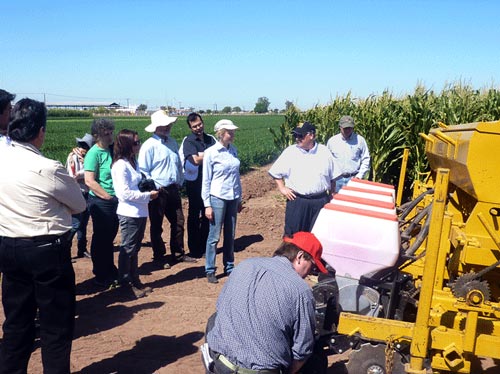 On 22 February 2012 we welcomed Howard G. Buffett and members of Sonora’s ‘Patronato’ (Patronato para la Investigación y Experimentación Agrícola del Estado de Sonora; PIEAES) to CIMMYT’s CENEB (Campo Experimental Norman E. Borlaug) station near Ciudad Obregón, Sonora, Mexico. The visit emphasized our joint concerns to improve food security and identified shared interests for improving opportunities for smallholder farmers and local entrepreneurs, and for widespread promotion of CA.
On 22 February 2012 we welcomed Howard G. Buffett and members of Sonora’s ‘Patronato’ (Patronato para la Investigación y Experimentación Agrícola del Estado de Sonora; PIEAES) to CIMMYT’s CENEB (Campo Experimental Norman E. Borlaug) station near Ciudad Obregón, Sonora, Mexico. The visit emphasized our joint concerns to improve food security and identified shared interests for improving opportunities for smallholder farmers and local entrepreneurs, and for widespread promotion of CA.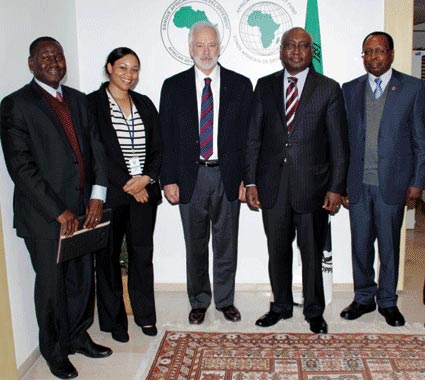 The group also discussed the MAIZE CRP and CIMMYT’s strong partnership with the International Institute of Tropical Agriculture (IITA). Institutional linkages such as these can be very beneficial to African smallholder farmers, as demonstrated by the major projects accomplished by CIMMYT’s Africa offices, such as Drought Tolerant Maize for Africa (DTMA), Sustainable Intensification of Maize- Legume Cropping Systems for Food Security in Eastern and Southern Africa (SIMLESA), Water Efficient Maize for Africa (WEMA), Insect Resistant Maize for Africa (IRMA), and Improved Maize for African Soils (IMAS). “CIMMYT has had an enormous impact on wheat in Africa. Most cultivars are CIMMYT derived and many wheat scientists from African NARS have been trained at CIMMYT,” said Ammar.
The group also discussed the MAIZE CRP and CIMMYT’s strong partnership with the International Institute of Tropical Agriculture (IITA). Institutional linkages such as these can be very beneficial to African smallholder farmers, as demonstrated by the major projects accomplished by CIMMYT’s Africa offices, such as Drought Tolerant Maize for Africa (DTMA), Sustainable Intensification of Maize- Legume Cropping Systems for Food Security in Eastern and Southern Africa (SIMLESA), Water Efficient Maize for Africa (WEMA), Insect Resistant Maize for Africa (IRMA), and Improved Maize for African Soils (IMAS). “CIMMYT has had an enormous impact on wheat in Africa. Most cultivars are CIMMYT derived and many wheat scientists from African NARS have been trained at CIMMYT,” said Ammar.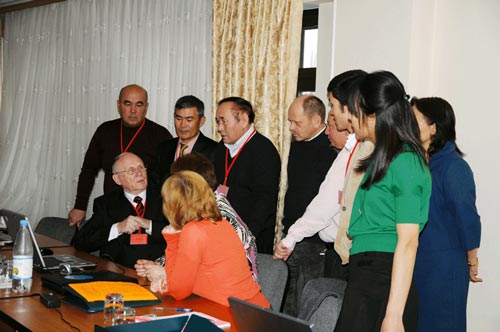 Since 2010, CIMMYT has been orchestrating the project “Strengthening the Plant Biotechnology Capacity for Sustainable Utilization of Plant Genetic Resources for Food and Agriculture in Kazakhstan”, in conjunction with the National Center for Biotechnology of the Republic of Kazakhstan, JSC “KazAgroInnovation” of the Ministry of Agriculture, and FAO. This initiative aims to improve breeding methods for the most important crops through the application of biotechnology and effective use of plant genetic resources, as well as identifying priorities and measures to develop these areas within Kazakhstani research institutions.
Since 2010, CIMMYT has been orchestrating the project “Strengthening the Plant Biotechnology Capacity for Sustainable Utilization of Plant Genetic Resources for Food and Agriculture in Kazakhstan”, in conjunction with the National Center for Biotechnology of the Republic of Kazakhstan, JSC “KazAgroInnovation” of the Ministry of Agriculture, and FAO. This initiative aims to improve breeding methods for the most important crops through the application of biotechnology and effective use of plant genetic resources, as well as identifying priorities and measures to develop these areas within Kazakhstani research institutions.
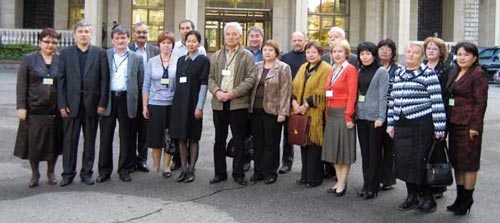
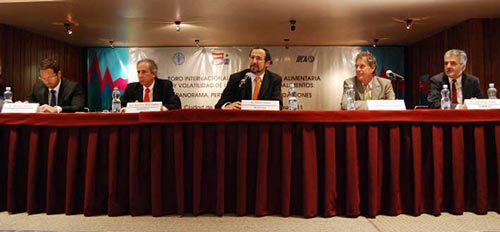
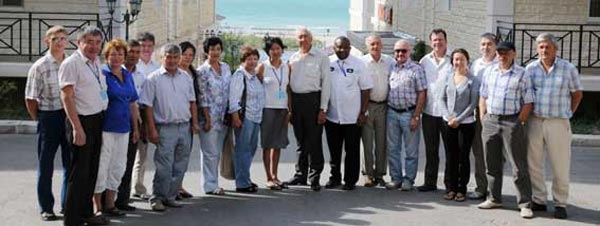
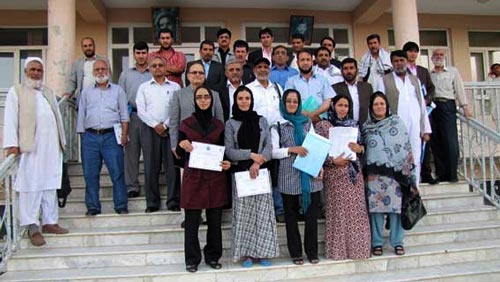
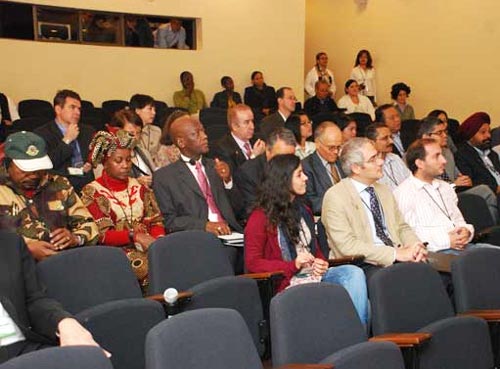 With diplomatic representatives from 15 countries in attendance, the event was designed to raise awareness and foster discussion on partnerships to secure global food security through agricultural research, an issue at the forefront of recent G20 talks in France. Musalem highlighted the Sustainable Modernization of Traditional Agriculture (MasAgro) initiative—implemented by SAGARPA and CIMMYT with myriad national, regional, and local organizations, both public and private—as an innovative model.
With diplomatic representatives from 15 countries in attendance, the event was designed to raise awareness and foster discussion on partnerships to secure global food security through agricultural research, an issue at the forefront of recent G20 talks in France. Musalem highlighted the Sustainable Modernization of Traditional Agriculture (MasAgro) initiative—implemented by SAGARPA and CIMMYT with myriad national, regional, and local organizations, both public and private—as an innovative model.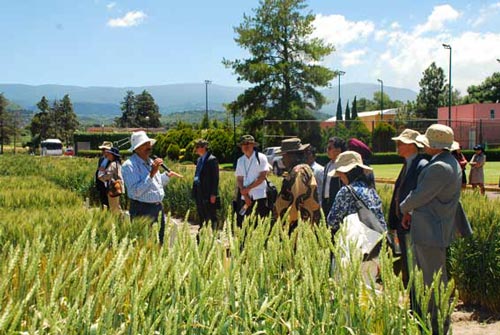 As part of the event, the visitors toured the Wellhausen-Anderson Plant Genetic Resources Center with Thomas Payne and enjoyed a presentation on wheat’s wild relatives by David Bonnet. At the long-term conservation agriculture trial plot, Bram Govaerts described current efforts to test and promote CA practices among thousands of Mexican farmers. The group saw new maize and wheat varieties and learned in more detail about the work CIMMYT and its partners are doing on these crops, in field presentations by Félix San Vicente, Natalia Palacios, José Luis Torres, Marc Rojas, and Ravi Singh.
As part of the event, the visitors toured the Wellhausen-Anderson Plant Genetic Resources Center with Thomas Payne and enjoyed a presentation on wheat’s wild relatives by David Bonnet. At the long-term conservation agriculture trial plot, Bram Govaerts described current efforts to test and promote CA practices among thousands of Mexican farmers. The group saw new maize and wheat varieties and learned in more detail about the work CIMMYT and its partners are doing on these crops, in field presentations by Félix San Vicente, Natalia Palacios, José Luis Torres, Marc Rojas, and Ravi Singh. The Forum for Agricultural Research in Africa (FARA)
The Forum for Agricultural Research in Africa (FARA)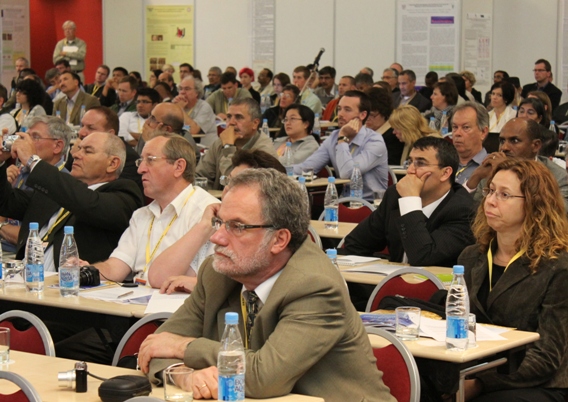 More than 600 wheat breeders, pathologists and representatives of national agricultural research institutions arrived in St. Petersburg to discuss rusts affecting wheat production globally. After introductory remarks byJeanie Borlaug Laube (BGRI chair), Ronnie Coffman (BGRI vice-chair), and Dr. Swapan Datta, DDG (CS) of ICAR, day started with session on ‘World of Rust: Global perspectives’:
More than 600 wheat breeders, pathologists and representatives of national agricultural research institutions arrived in St. Petersburg to discuss rusts affecting wheat production globally. After introductory remarks byJeanie Borlaug Laube (BGRI chair), Ronnie Coffman (BGRI vice-chair), and Dr. Swapan Datta, DDG (CS) of ICAR, day started with session on ‘World of Rust: Global perspectives’: